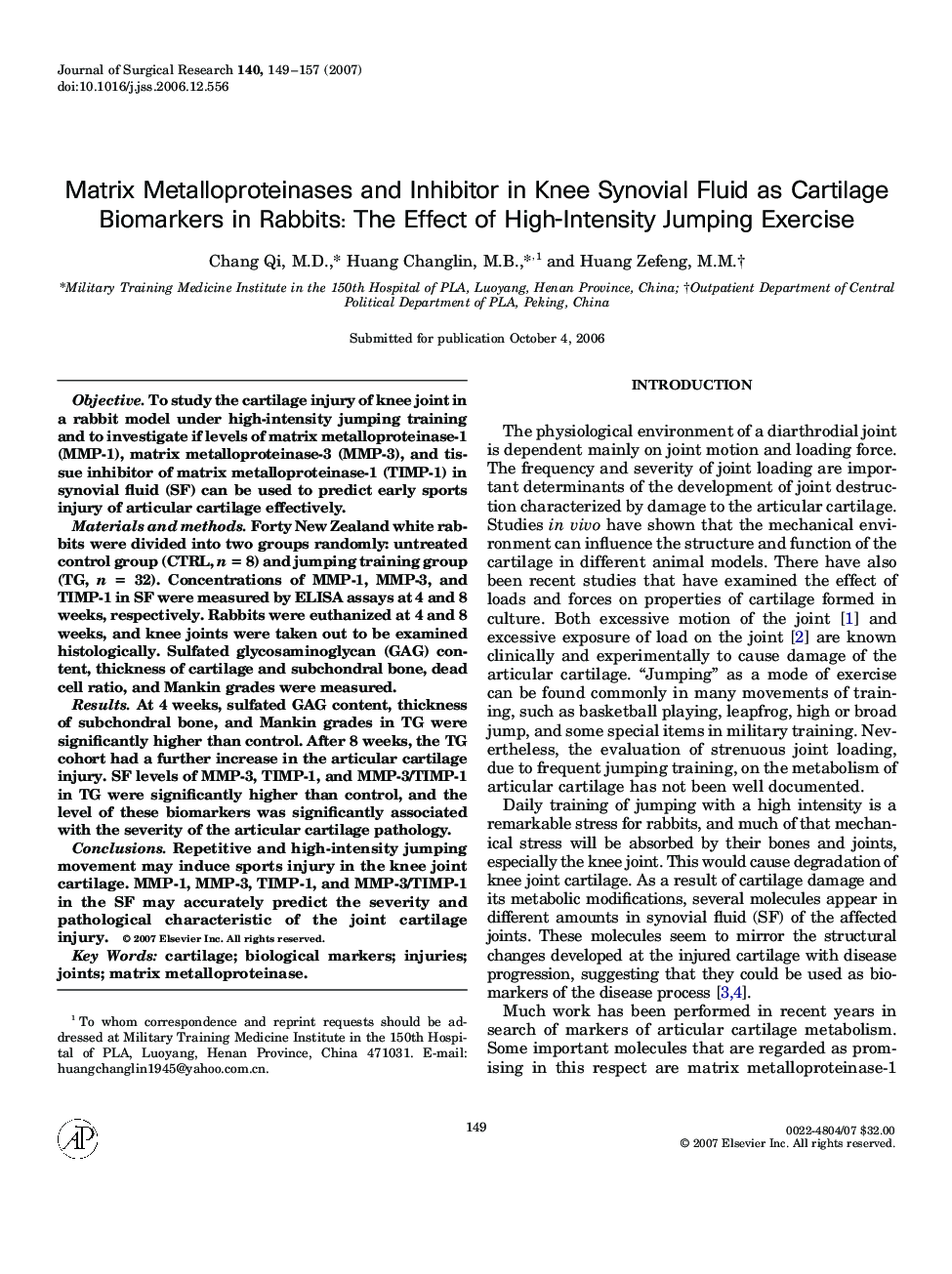| Article ID | Journal | Published Year | Pages | File Type |
|---|---|---|---|---|
| 4304597 | Journal of Surgical Research | 2007 | 9 Pages |
ObjectiveTo study the cartilage injury of knee joint in a rabbit model under high-intensity jumping training and to investigate if levels of matrix metalloproteinase-1 (MMP-1), matrix metalloproteinase-3 (MMP-3), and tissue inhibitor of matrix metalloproteinase-1 (TIMP-1) in synovial fluid (SF) can be used to predict early sports injury of articular cartilage effectively.Materials and methodsForty New Zealand white rabbits were divided into two groups randomly: untreated control group (CTRL, n = 8) and jumping training group (TG, n = 32). Concentrations of MMP-1, MMP-3, and TIMP-1 in SF were measured by ELISA assays at 4 and 8 weeks, respectively. Rabbits were euthanized at 4 and 8 weeks, and knee joints were taken out to be examined histologically. Sulfated glycosaminoglycan (GAG) content, thickness of cartilage and subchondral bone, dead cell ratio, and Mankin grades were measured.ResultsAt 4 weeks, sulfated GAG content, thickness of subchondral bone, and Mankin grades in TG were significantly higher than control. After 8 weeks, the TG cohort had a further increase in the articular cartilage injury. SF levels of MMP-3, TIMP-1, and MMP-3/TIMP-1 in TG were significantly higher than control, and the level of these biomarkers was significantly associated with the severity of the articular cartilage pathology.ConclusionsRepetitive and high-intensity jumping movement may induce sports injury in the knee joint cartilage. MMP-1, MMP-3, TIMP-1, and MMP-3/TIMP-1 in the SF may accurately predict the severity and pathological characteristic of the joint cartilage injury.
